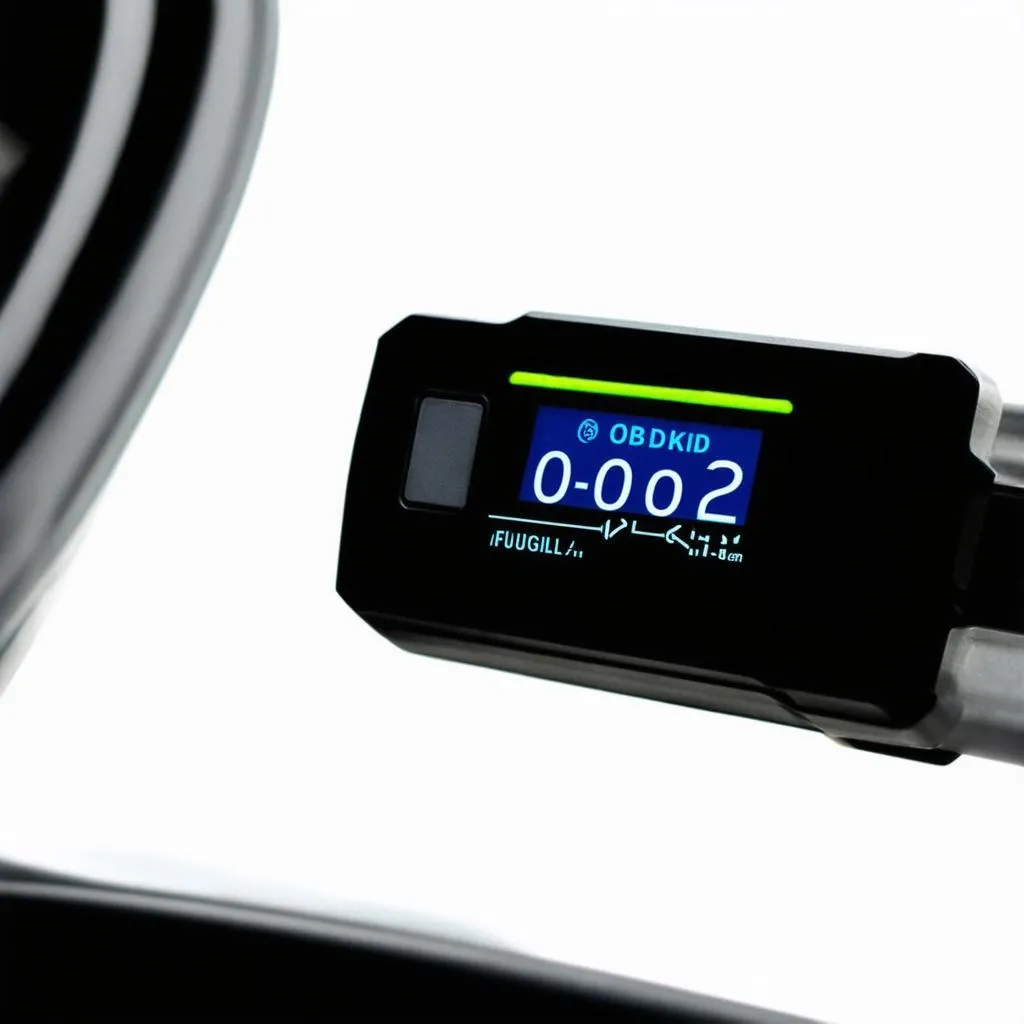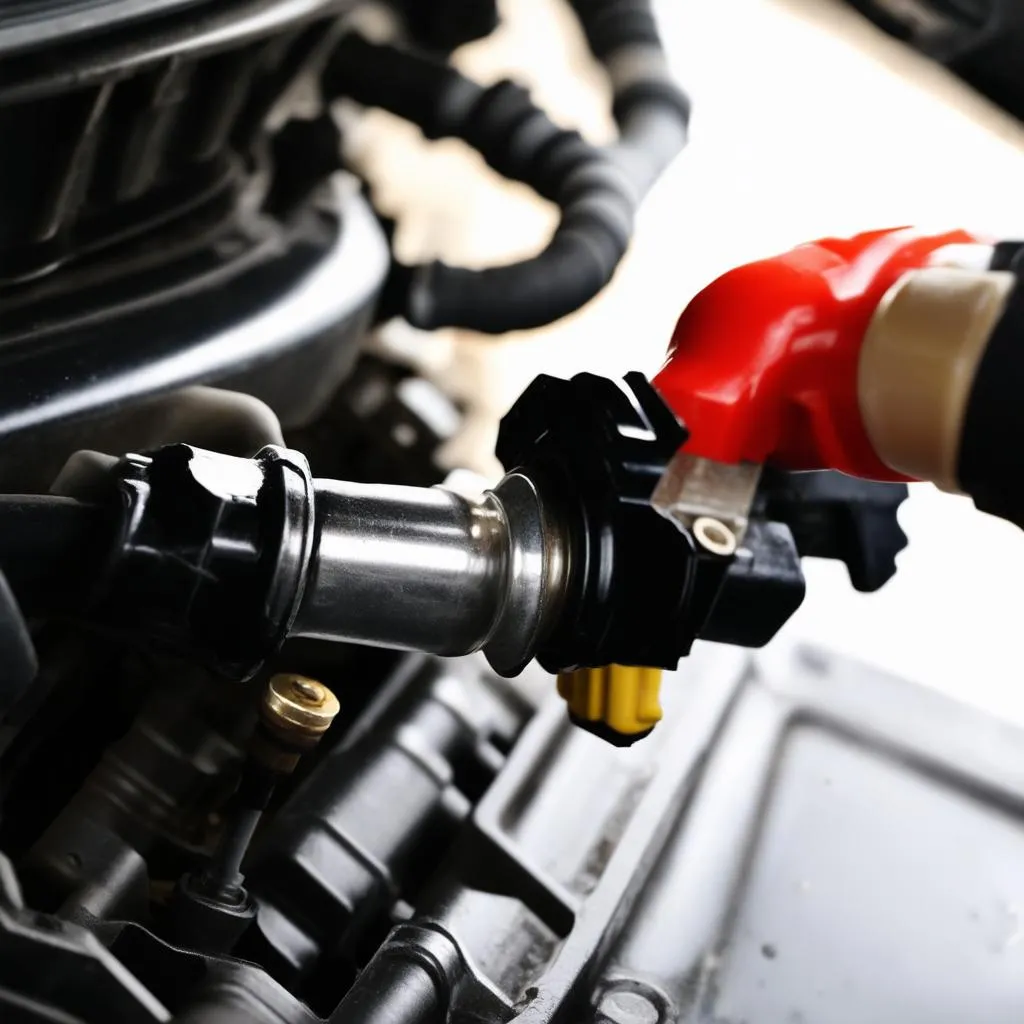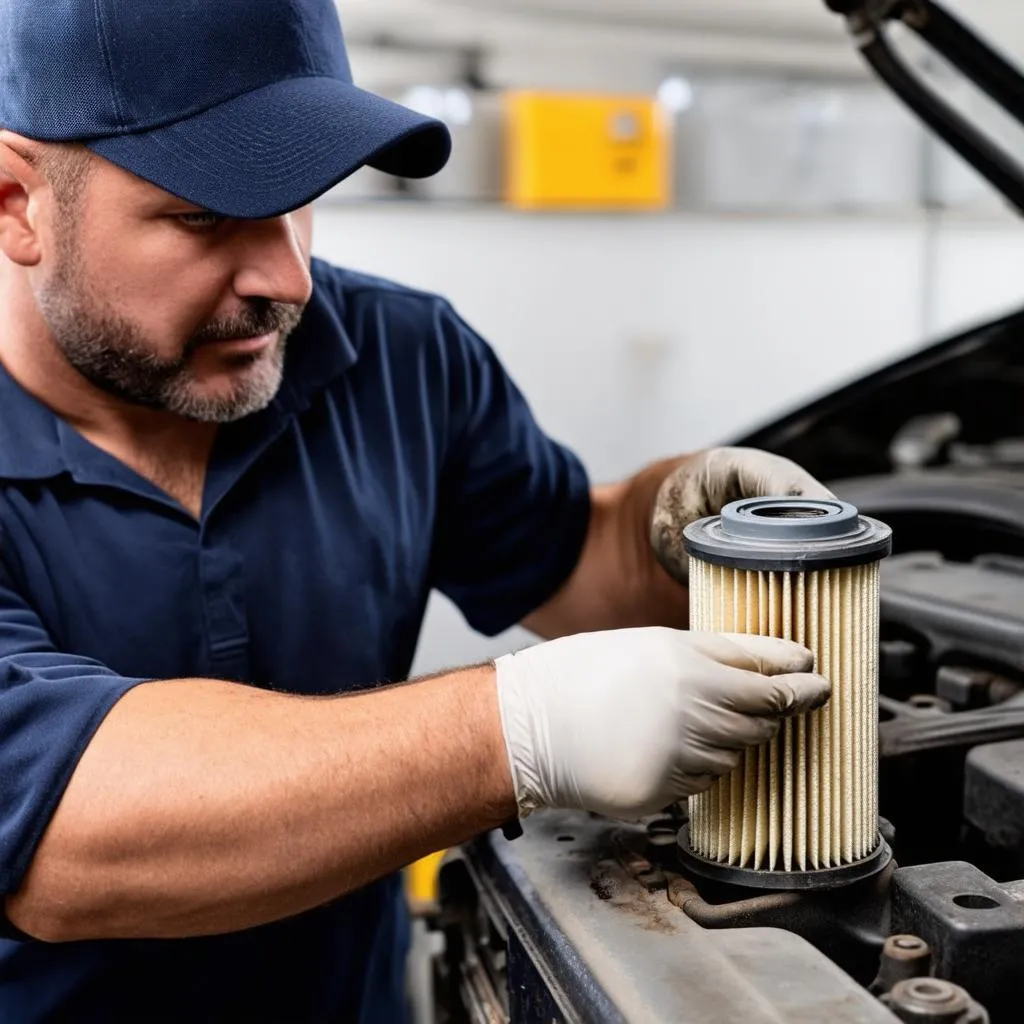Have you ever felt like your car was losing its pep, sputtering along like a fish out of water? It could be a sign of fuel pressure issues, and luckily, you might be able to diagnose it using your trusty OBD2 scanner.
Understanding Fuel Pressure: The Heart of Your Engine
Fuel pressure is the force that pushes fuel from your fuel tank to the engine. It’s crucial for proper combustion, and if it’s too low, your engine might struggle to start, run poorly, or even stall.
Think of it like a heart pumping blood throughout your body. Fuel pressure is the force that keeps the fuel flowing and your engine running smoothly.
Checking Fuel Pressure with OBD2: A Modern Approach
While the traditional method of checking fuel pressure involves a mechanical gauge and a little bit of know-how, the OBD2 system offers a more convenient and digital way.
Can I Check Fuel Pressure with OBD2?
It depends on your car’s model and the capabilities of your OBD2 scanner. Some scanners, especially those designed for professional use, can read fuel pressure data directly from the engine control unit (ECU). However, not all OBD2 scanners have this feature.
What Information Can OBD2 Provide About Fuel Pressure?
OBD2 can display a variety of fuel-related data, including:
- Fuel pressure sensor reading: This is the actual reading from the sensor, indicating the pressure at the fuel rail.
- Fuel pressure target: This is the pressure level the ECU is aiming for.
- Fuel pressure regulator duty cycle: This indicates how much the fuel pressure regulator is opening and closing to maintain the desired pressure.
Note: The specific data available might vary depending on the car model and OBD2 scanner.
How.to Check Fuel Pressure With Obd2
- Connect your OBD2 scanner: Plug your scanner into the OBD2 port, usually located under the dashboard.
- Find the fuel pressure data: Navigate through the scanner’s menus to find the fuel pressure readings. The exact location might differ depending on your scanner’s interface.
- Check the readings: Compare the fuel pressure sensor reading to the fuel pressure target. If they are significantly different, it could indicate a fuel pressure issue.
Pro Tip: Consult your vehicle’s owner’s manual or a trusted mechanic for specific fuel pressure specifications for your car model.
Exploring Fuel Pressure: Beyond the OBD2
While OBD2 is a convenient tool, it’s not a magical solution for all fuel pressure issues. Sometimes, you might need additional tools or diagnostics to pinpoint the root cause.
According to a renowned automotive expert, Dr. Maria Santos, “While OBD2 offers a glimpse into fuel pressure, it’s essential to understand that it’s only a single piece of the puzzle. A thorough investigation may require additional testing.”
Common Fuel Pressure Problems and Their Causes
- Low fuel pressure: This can be caused by:
- Clogged fuel filter
- Faulty fuel pump
- Leaky fuel lines
- Malfunctioning fuel pressure regulator
- High fuel pressure: This can be caused by:
- Stuck fuel pressure regulator
- Faulty fuel pressure sensor
What Does Feng Shui Say About Fuel Pressure?
While Feng Shui is often associated with home decor and energy flow, it can also be applied to our vehicles.
According to Feng Shui principles, a smooth-running car represents a harmonious flow of energy, both within the vehicle and in our lives.
Therefore, maintaining proper fuel pressure is essential for ensuring a balanced flow of energy within your car, which, in turn, can positively impact your journey.
Frequently Asked Questions about Fuel Pressure and OBD2
Q: Can I use a generic OBD2 scanner to check fuel pressure?
A: Not all generic scanners have the ability to read fuel pressure data.
Q: How often should I check my fuel pressure?
A: If you notice any unusual performance issues, it’s a good idea to check your fuel pressure.
Q: Can I fix fuel pressure issues myself?
A: Depending on the severity of the issue and your technical expertise, you might be able to perform simple repairs like replacing a fuel filter. However, for more complex problems, it’s best to consult a qualified mechanic.
Conclusion
Checking fuel pressure with OBD2 can be a valuable tool for diagnosing potential problems. Remember, however, it’s only one part of a comprehensive approach to maintaining your vehicle’s health.
Need expert assistance with your car’s diagnostics or want to explore advanced tools like dealer scanners? Contact us via Whatsapp: +84767531508. We have a team of certified technicians available 24/7 to help you get back on the road smoothly.
 OBD2 fuel pressure gauge
OBD2 fuel pressure gauge
 Car fuel pump
Car fuel pump
 Fuel filter replacement
Fuel filter replacement